Sidney Lumet, from stage to screen
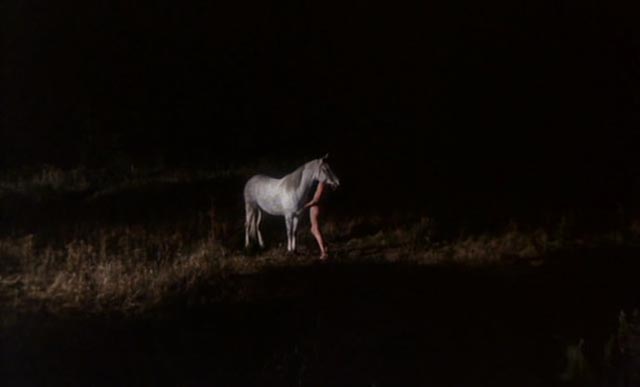
I think the first Sidney Lumet film I ever saw (long ago on television) was Fail Safe (1964). Made the same year as Stanley Kubrick’s Dr. Strangelove or How I Learned to Stop Worrying and Love the Bomb, it seemed (no doubt a little unfairly) to illustrate Lumet’s limitations as a filmmaker. Ploddingly sincere, it managed to deal with the dangers of nuclear conflict without ever evoking the underlying madness which was the essence of Kubrick’s film. In Fail Safe, we get a lot of serious, decent, well-meaning people (well, men) who by accident lose control of the monster they have built (it’s significant that the film’s attack is launched by a technical failure rather than by intention – it’s the machines not the men who are flawed). The film failed to recognize that nuclear weapons and the philosophy of Mutually Assured Destruction (MAD) were fundamentally different from everything we had previously devised to kill one another. Lumet’s position was that of a decent concerned liberal who seemed unable to see that we had, as a political species, gone insane. The ending of Fail Safe evokes sadness rather than anger; we have been forced to make hard choices about tragic self-sacrifice, but the strength to make those choices ensures our survival and perhaps brings a small degree of wisdom which may make us change our dangerous ways for a better future.
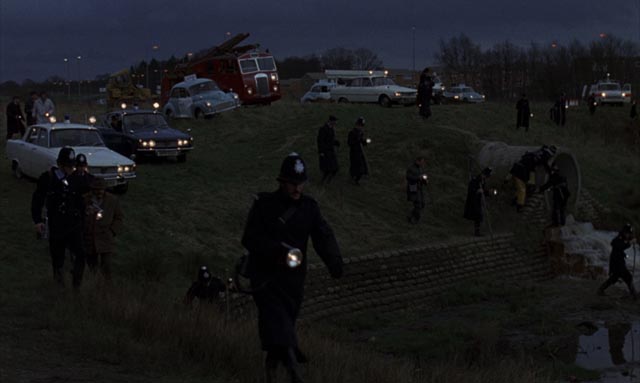
The liberal humanist in Lumet produced a failure of imagination in the face of the political and military insanity of the Cold War. In the booklet accompanying the new Masters of Cinema Blu-ray of The Offence (1972), Lumet is quoted as saying “I’m terribly out of fashion now because I don’t like directorial style. I think the theme should provide the style … I’ve got just too much respect for writing … I remember I used to be constantly attacked for doing plays as movies … Again, it came out of this same thing, people were constantly confusing cinema with scenery.” He seems to be expressing a deliberate opposition to the equally absolutist assertion that true cinema makes words unnecessary; but there’s far more to “directorial style” than empty flash (though there is far too much of that in a lot of movies, particularly these days). How ideas are expressed visually matters. Kubrick’s attention to detail in Strangelove, particularly in the B52 set, embodies the essence of how technology has overtaken the capacity of people to think clearly – the flight crew serves the needs of the machine rather than the machine serving as a tool for the people trapped within it. In Fail Safe, the plane is little more than a functional movie set for the actors to sit in and say their lines. When the crew open their orders, all we get is a piece of cardboard with the word Moscow printed on it, large enough to be visible to anyone sitting at the back of the theatre; Kubrick’s crew have thick detailed manuals giving instructions down to the smallest detail. Lumet’s trust that the theme itself is enough ends up making his film unconvincing and, in places, inadvertently comic; Kubrick’s approach turns fierce comedy into a chilling sense of reality.
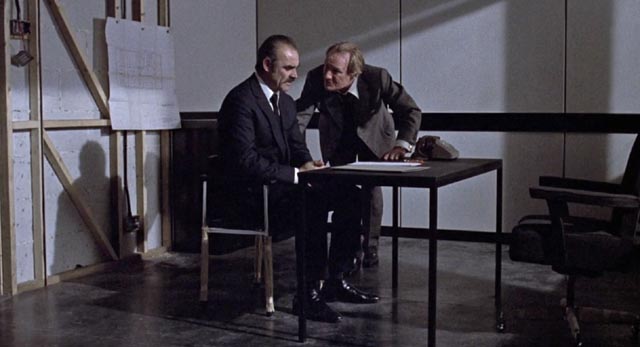
Which is not to say that Lumet was a bad filmmaker, just that his approach was sometimes unsuited to the material he chose. I think on the whole, he was at his best when he kept close to contemporary, realistic subjects, ones which relied on real locations rather than the need to construct an art-directed time and place. Serpico, Prince of the City, Dog Day Afternoon are films rooted in character and rife with moral dilemmas; the kind of material which makes for good theatre. Much of their power derives from being shot on actual urban locations, rather than studio sets. But throughout his career, Lumet nonetheless returned fairly often to theatrical properties, with varying degrees of success – in fact, he began his film career with 12 Angry Men, adapted from Reginald Rose’s live television play directed by Franklin Schaffner. Of the twelve films Lumet directed in the ’70s, five were adaptations of theatrical works; a glance at that decade reveals what might be termed eclectic interests. Lumet didn’t consider himself an originator of projects, but rather someone who found and then served material created by others. Which is no doubt how he could follow the glossy trifle Murder on the Orient Express (1974) with the intense, and to a degree socially transgressive, Dog Day Afternoon (1975). In some ways, he was a bit like another live-television alumnus, John Frankenheimer; the big difference between these two lies in Lumet’s assertion that he disliked directorial style. Frankenheimer, also very eclectic in his choice of subjects, invariably imposed his “directorial personality” on every film he made; Lumet in contrast tended to disappear into the material. It’s a matter of personal taste which of these two approaches one prefers. For the record, I lean more towards Frankenheimer, although he too made his share of clunkers.
*
The Offence (1972)
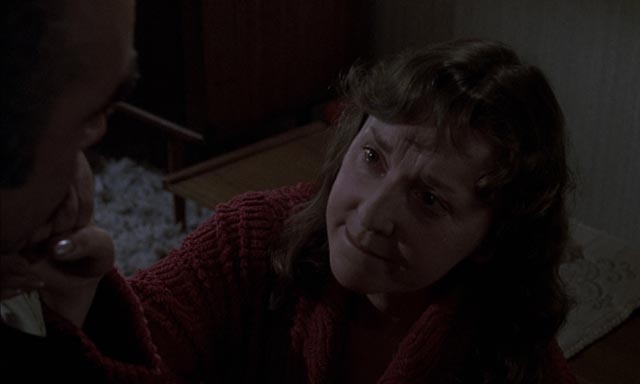
These thoughts have been triggered by watching two of Lumet’s theatrical adaptations from the ’70s on new Blu-rays in recent weeks. Both have their merits, and both display the limitations (and at times faults) of Lumet’s approach. The Offence was the third collaboration between Lumet and star Sean Connery. Their best film together was The Hill (1965), again adapted from a play (by Ray Rigby), an intense study of personal and institutional pathology set in a British military prison during World War 2. A few years later, they got together again for The Anderson Tapes (1971), a heist movie which was hampered by the central gimmick of Lawrence Sanders’ novel (everyone in the movie is being bugged by someone else, this universal surveillance ultimately undoing the thieves’ plans). Immediately after that film, Connery was reluctantly persuaded to play James Bond again in Diamonds Are Forever. Following that, he went back to Lumet for The Offence, which may be seen as his way of cleansing himself of Bond for good.
Connery plays Detective Sergeant Johnson, a twenty year veteran working on a case involving sexual attacks on young girls. Years of witnessing the worst aspects of human behaviour are brought to the surface and he beats the prime suspect to death in an interview room. John Hopkins’ original play, Something Like the Truth, had three acts, each a confrontation between Johnson and one other person. In Hopkins’ adaptation, this structure was kept, but with the addition of a new opening act depicting the search for the predator’s latest victim. This serves to “open up” the play and create a sense of a wider world surrounding the story’s events. Johnson is the one who finds the girl in the woods and perhaps it is her fear of him as he tries to calm her that finally triggers the anger which he soon unleashes; here he is, the representative of good, seen by this girl as equivalent to the monster who attacked her. This confusion of identities is central to what subsequently occurs.
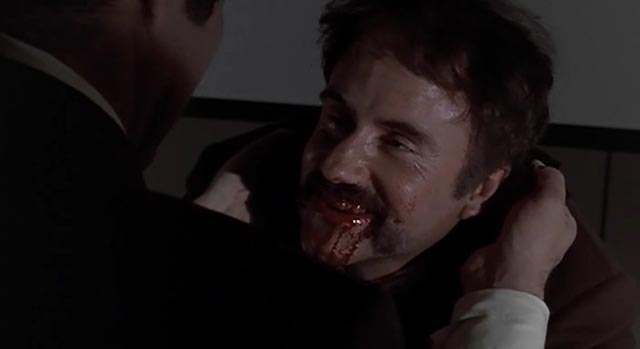
The play’s first act takes place between Johnson and his wife (Vivien Merchant) as he gets home after killing the suspect; their marriage seems like a nightmare, with suggestions of abuse rooted in Johnson’s anger. The following act sees Johnson being interrogated by Detective Superintendent Cartwright (Trevor Howard), a man who obviously despises Johnson and what he represents; something of a bureaucrat, he maintains a professional distance from the squalor of the job, the kind of distance Johnson is incapable of sustaining. In the final act, we see what actually occurred in the interview room; through a mixture of complacency and self-loathing, the suspect, Baxter (Ian Bannen), draws Johnson into a kind of sick psychological game, eventually forcing the policeman to see a reflection of himself in Baxter, awakening an awareness of his own unpleasant nature. When he beats Baxter to death, he’s trying to crush that awareness … but inevitably the violent outburst merely confirms it.
The Offence is bleak and rather unpleasant, with Connery working fiercely to make himself as unlikable as possible – but the effort seems to have served its purpose; following The Offence, he was able to take on a wide range of roles which had nothing to do with his Bond persona, broadening his career considerably. But that performance wouldn’t work as well as it does if not for the rest of the cast: Merchant, Howard and particularly Bannen give Connery a context for his rage; as is generally the case in Lumet’s films, it’s the acting that really counts. Ironically, the opening of The Offence represents one of his rare attempts at “cinematic style”; the title sequence plays out entirely in slow motion as various officers in the police station discover what Johnson has done in that interview room. The effect is strained and distancing, rather than drawing the viewer into the drama. Immediately after the revelation of Johnson standing over Baxter in a daze, the film switches to the director’s more accustomed naturalism with the depiction of the search for the missing girl and the subsequent emphasis on character and performance.
The Masters of Cinema disk has an excellent transfer which captures the dank, oppressive look of Gerry Fisher’s cinematography, accompanied by four brief interview featurettes.
*
Equus (1977)
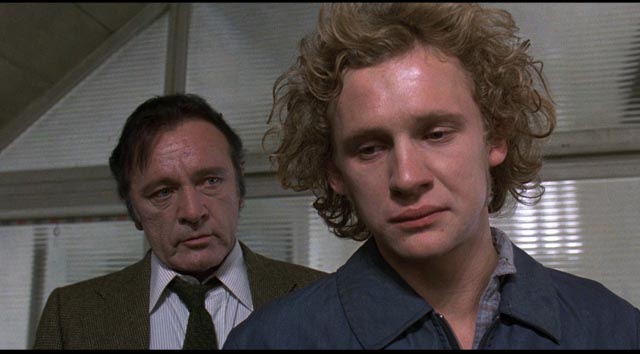
Lumet was somewhat less successful with his film of Peter Shaffer’s theatrical hit Equus (1977), largely because the play was conceived in a non-naturalistic style which continually fights against Lumet’s approach, resulting in the epic failure of the climactic sequence in which metaphor is crushed by brutal realism.
Once again, this is a play revolving around a violent crime and the sense of identity which forms between perpetrator and investigator – although here, the investigator is a psychologist trying to understand why a teenage boy committed the horrific act of blinding six horses. Much of the film again consists of two-hander scenes – between Richard Burton as the psychologist Dysart and Peter Firth as the boy Alan Strang, with additional scenes between Burton and Eileen Atkins as his friend and confidant Hesther, and Burton and Colin Blakely and Joan Plowright as Alan’s parents.
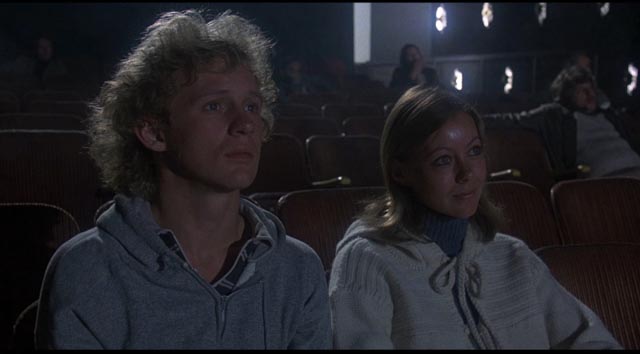
Shaffer’s text uses the incident as a starting point to explore issues of myth and religion and the sense of loss resulting from the abandonment of a belief in higher orders of meaning resulting from the replacement of gods with reason. Theatrically, this was played out in abstract ways on an essentially empty stage, with the horses evoked by actors wearing masks (in turn evoking figures of ancient myth). The central conflict of the play exists within the character of Dysart: he is drawn to Alan because of the boy’s pagan connection with the animals, a connection which links Alan to deeper forces of nature which in the past were perceived as gods. In effect, Dysart doesn’t want to “cure” Alan because doing so would cut him off from a primal spiritual power and make him as ordinary as the pathetic inhabitants of the mundane, rational present.
Alan’s act of violence is rooted in the psycho-sexual connection he feels for the horses, which in turn is rooted in a confusing sexual awakening he had as a child, in which erotic feelings were linked to a man who took him riding on a powerful horse; his child’s mind conflated man and horse (again a mythic link, with suggestions of the centaur) and perhaps because of a social need to sublimate the homosexual element of his experience, he fixated on the animal. That fixation energizes him, but it also ultimately makes it impossible for him to relate sexually to the girl who works at the stable (Jenny Agutter); he fails to perform with her in the stable loft and, blaming that failure on the horses which witnessed it, he blinds them. This is where Shaffer’s metaphorical drama clashes fatally with Lumet’s naturalism: blinding symbolic horses on stage served to represent Alan’s spiritual crisis, but bloodily tearing out real horses’ eyes with a scythe is a decidedly material horror. All of Shaffer’s meaning is obliterated by graphic spectacle, reducing the play to mere psychodrama. (Shaffer himself considered the graphic realism of the blinding a huge mistake.) The inherent artificiality of the stage makes ritual and myth not only possible but actually a natural part of theatre-going; film is also capable of expressing these things (the work of directors like Pasolini and Paradjanov, for instance), but not when tied to a naturalistic style. Here, Lumet’s limitations work against the play.
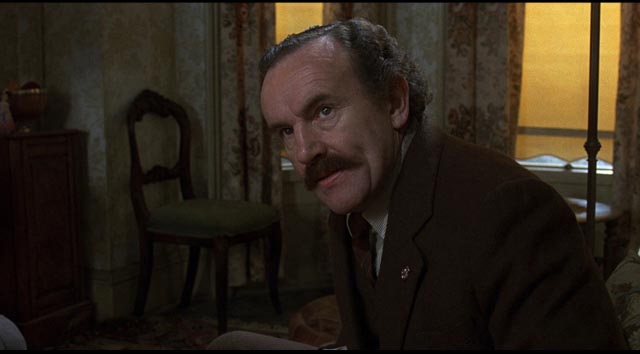
Although by the time the film was made Richard Burton had become almost a parody of himself, and his performance here is rather large and blustery, it is nonetheless one of his finest pieces of work, particularly in the quieter scenes with Atkins where he lays bare Dysart’s own tormented feelings about not being able to believe in anything beyond the immediate material circumstances of his life. The best thing in the film, though, is Peter Firth’s performance as Alan, a role he had played hundreds of times on stage and yet makes grippingly fresh here. Although the play is really about Dysart’s spiritual struggle, the heart of the film is the turmoil of Alan’s sexual confusion (with a very lovely and natural Jenny Agutter serving as a perfect foil for that confusion).
The Twilight Time Blu-ray of Equus features an interesting commentary in which Nick Redman, a huge fan of the play, in conversation with Julie Kirgo, analyzes in great detail what works and, crucially, what doesn’t work in Lumet’s version. There is also Tony Palmer’s In From the Cold: The World of Richard Burton (1988), an excellent feature-length documentary about the actor’s life and career.
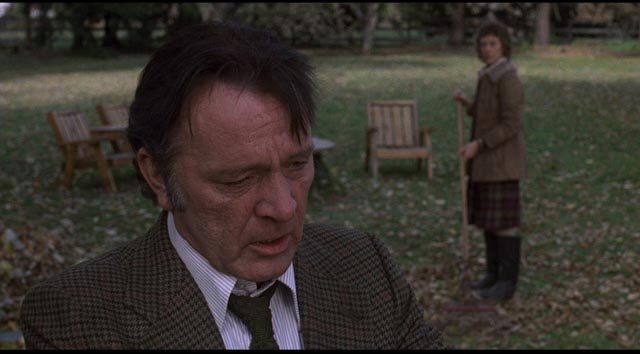
These two films don’t represent Sidney Lumet’s best work, but they do share some interesting similarities which may indicate something about the director’s personal view of life. Both films deal with horrific crime; both implicate the investigator in those crimes; both are rooted in an underlying sexual pathology; both protagonists reject “ordinary life” in the form of unwanted wives (Connery’s psychologically and possibly physically abused); both end up identifying with the perpetrator – Burton in admiration of Firth’s spiritual intensity; Connery in having so absorbed the violence he has seen in his career that he now shares Baxter’s perverse compulsions … and both films start after the fact then circle back to reach the moment of the crime, supposedly now with a fuller understanding of causes. Perhaps it means nothing at all, but both films are based on English plays; The Offence was actually filmed in England, while Equus (to its detriment, according to Nick Redmond) was filmed in Canada (to accommodate Burton’s tax issues).
In some of his best work, Lumet explored the moral ambiguities experienced by people whose lives are touched by crime and transgression. In these two films, those concerns seem too schematic, too contrived – or perhaps simply too theatrical – to work in this medium. Some things just don’t translate well from the stylized environment of the stage to the more naturalistic screen.
Comments
Dear Mr.Godwin,
Your article on Sidney Lumet is interesting. I would like to note that Lumet’s works do have a visual concept. When he said he “disliked ‘directorial style'”, he does not mean that the individual films he made do not have a directorial style. I’m sure he just wanted to say that he did not aim for ONE recurring, easily identifiable personal signature which would be the same in all of his works. He explains this in detail in his book “Making Movies”. I
highly recommend Frank R. Cunningham’s analysis of his work and recurring cinematic motifs (“Sidney Lumet: Film and Literary Vision”). You won’t always agree with Cunningham’s judgments (his comparison of “Fail Safe” and “Dr. Strangelove” may seem a bit one-sided), but his observations on Lumet’s style are very rewarding. As a big admirer of his oeuvre I may certainly be biased. In retrospect many of his works – like his New York police and crime movies you mention – seem typically Lumetian to me although he never intended to be an auteur. Thanks for your observations and best regards, Karl Rackwitz